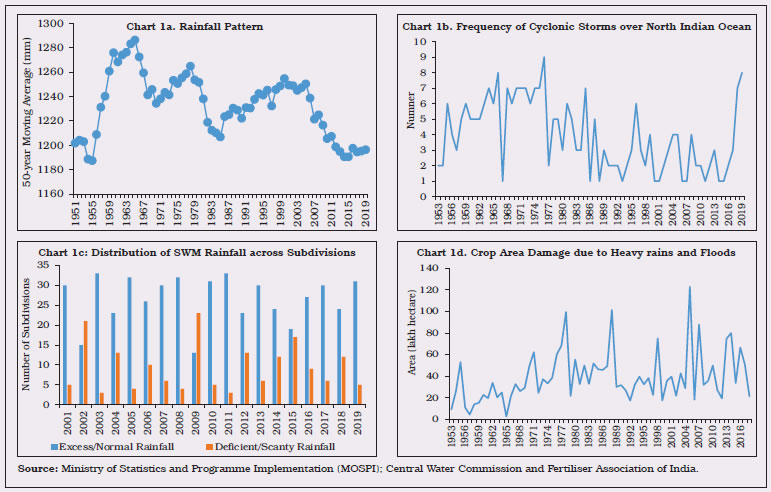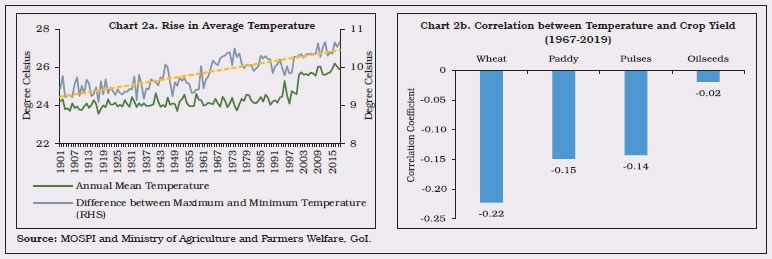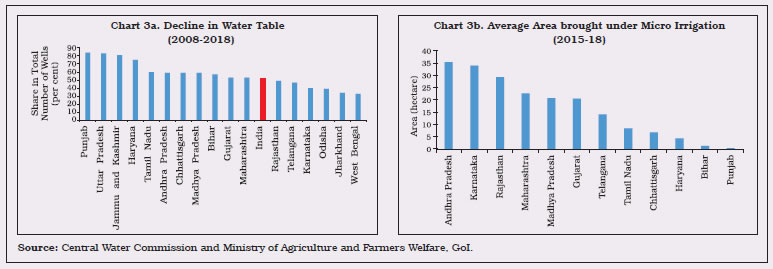Climate Change - The Challenges for Indian Agriculture
Climate Change - The Challenges for Indian Agriculture
As in many parts of the world, drastic changes in climatic conditions have also been observed in India and these include impact on onset and withdrawal dates of monsoon and the incidence of extreme events (IPCC, 2019 and GoI, 2020).
Consistent with models of climate change, the number of dry days as well as days with extremely high levels of rainfall have increased in India - more intense droughts; downward shifts in average rainfall by 59 mm since 2000 (Chart 1a); higher frequency of cyclones - India was hit by 8 cyclones in 2019 which is the highest since 1976 (Chart 1b); high variation in the number of subdivisions receiving excess/normal and deficient/scanty monsoon rains (Chart 1c); and an increase in the extent of crop area damaged due to unseasonal rains and heavy floods (Chart 1d).

Global warming has also led to a sharp rise in the annual average temperature in India by 1.8°C between 1997 and 2019 as compared to a 0.5°C increase between 1901 and 2000 (Chart 2a). This has likely caused a decline in crop yields, undermining farm income (Chart 2b).

Global warming has also led to a sharp rise in the annual average temperature in India by 1.8°C between 1997 and 2019 as compared to a 0.5°C increase between 1901 and 2000 (Chart 2a). This has likely caused a decline in crop yields, undermining farm income (Chart 2b).
Water tables have depleted at an alarming rate, with around 52 per cent of the wells in India recording decline in water levels between the years 2008 and 2018 (Chart 3a). This imparts urgency to move from flood irrigation to micro irrigation methods like drip or hose reel, which can save up to 60 per cent of the water used and also help in preventing pest incidence. At present, the coverage of micro irrigation is much lower in states which have recorded higher declines in water tables (Chart 3b). Alongside, there is a need to adopt crop cycles, credit cycles and procurement patterns to monsoonal shifts.

Comments
Post a Comment